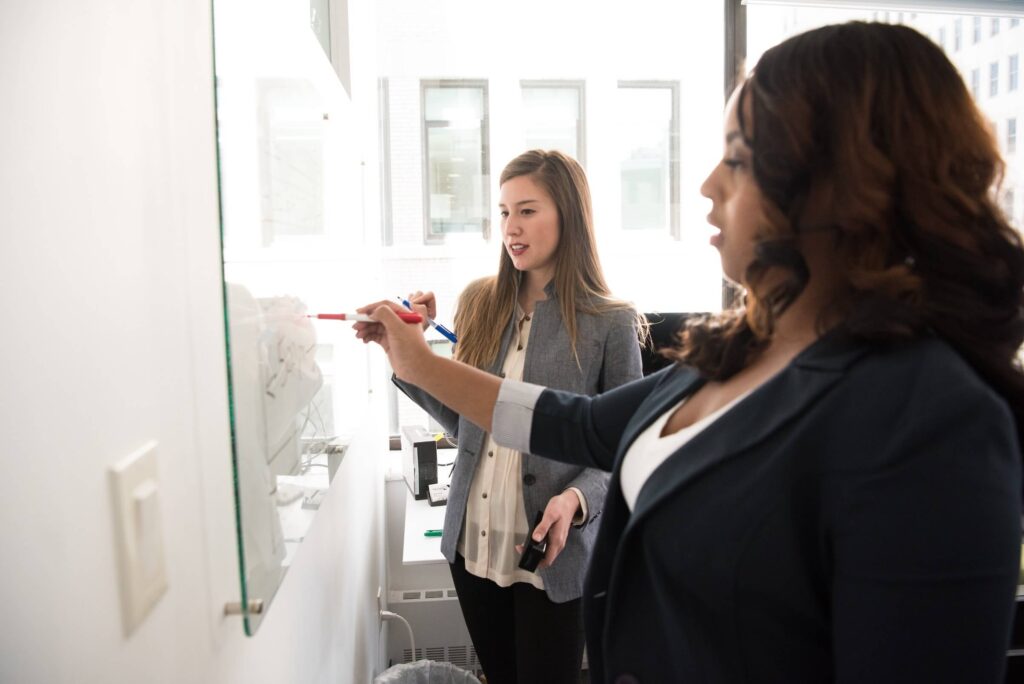Disconnected engineering teams make effective continued learning near-impossible to achieve.
Facilitating continued learning and collaboration amongst engineering teams is vital — however, departmental silos inhibit these teams from understanding each other on a deeper level.
Without the right strategy in place for continued learning, a software engineering team can end up with diminished efficiency, productivity, and overall employee satisfaction.
What is collaborative learning?
Collaborative learning is an approach to workplace education that prioritizes building better connections between teams. In engineering, collaborative learning is key for improving inter-departmental communication and cooperation.
Yet, collaborative learning is drastically under-utilized across engineering and many other industries.
A recent survey of more than 130 learning design professionals reveals that although 80% of respondents think collaborative learning is essential in the workplace, only 20% actively leverage it.
With this in mind, let’s explore the advantages of collaborative learning for engineering teams and how engineering leaders can implement it.
Why should engineers care about collaborative learning?
Through collaborative learning, engineering leaders can ensure their entire business team has the intellectual resources and support necessary to collaborate.
Collaborative learning can have many excellent benefits for an engineering team, including:
Tribal knowledge sharing
Collaborative learning takes an approach to knowledge sharing that is open and accessible for all employees at all levels. In turn, engineering firms can simplify the process of codifying best practices and ensure all employees have a shared understanding of the inner workings and objectives of the company.
Enhanced employee engagement
Engineering teams want to feel engaged in their work. Collaborative learning is all about building new connections between teams and boosting talent retention by making all team members feel like valuable contributors.
Continuous learning
An engineering environment is often subject to change as new technologies and techniques are developed over time. As a result, engineering teams need the freedom and flexibility to practice continuous learning. With collaborative learning, engineering teams can both continue enhancing their niche knowledge and keep up with changes occurring across various departments.
3 steps for implementing collaborative learning for engineers
Discussing the advantages of collaborative learning for engineers is all well and good, but how can engineering leaders actually leverage and implement this approach to business learning?
Here are three essential steps for getting started with collaborative learning:
Identify pain points in company communication channels
One of the most crucial advantages of collaborative learning is the opportunity to open up new channels of communication between your company departments.
Just take a look at how Spotify’s Senior Product Manager Alex Krupp describes this advantage:
“Creating larger knowledge networks gives people the opportunity to access knowledge and expertise across the company for the sake of the greater good and for our collective success, instead of having it just pop up randomly.”
In engineering, for instance, development and quality assurance (QA) teams can often hit roadblocks when launching a new product due to ineffective communication between these teams.
This is an example of a communication pain point — although the development and QA teams are working on the same project, they lack the proper language and collaborative skills to effectively communicate their needs with each other.
Collaborative learning gives these teams new opportunities to learn about each other’s specialties, making it easier to communicate with efficiency and accuracy.
Assess the burden of manual collaborative learning tasks
Manual tasks are one of the biggest burdens to consider when creating a collaborative learning program.
Your company probably has engineering experts who can teach collaborative learning classes — but do these experts have the time to develop a curriculum and learning course all on their own?
As an engineering leader, it is your responsibility to find the right solutions for collaborative learning that minimize the burden of manual tasks. For instance, rather than requiring your experts to serve as both teachers and lesson planners, you could leverage automated technologies to handle the more tedious administrative and course-planning work.
Ultimately, your goal with collaborative learning is to eliminate communication barriers and encourage teams to learn about each other’s work in greater depth. Finding ways to minimize the additional manual burden you place on your teams is essential for ensuring this goal is achieved.
Create a strategy that suits the needs of your engineering team
Just as people are individuals, no two engineering teams are the same.
Adopting a one-size-fits-all approach to collaborative learning fails to acknowledge the uniqueness of each team and its specific needs.
Engineering leaders must embrace collaborative learning in a way that enables and empowers team members to share their distinct experiences and expertise. This approach should focus not just on boosting productivity but also enhancing company culture and building greater business resilience.
To accomplish this, engineering leaders should develop a collaborative learning strategy by:
Asking Questions: Determine the main strengths and weaknesses of your teams by asking the right questions, for example, which pain points they face on a daily basis and how they would fix various processes if they had the power to do so. By asking these questions, you can better identify the key challenges your teams face when it comes to continued learning.
Welcoming Feedback: Along with asking the right questions, it is equally vital to welcome team feedback. Encouraging employees at all levels to offer their feedback allows you to begin engaging with all team members at a deeper level and discover where extra learning is needed.
Facilitating Better Relationships: Facilitating professional relationships within your team through collaborative learning is vital. For instance, you can pair newcomers with seasoned employees during training sessions, giving the newcomer more professional connections they can rely on and giving seasoned employees a chance to prove their value.
Set Clear Success Markers & Measure Regularly: For business leaders to make the most out of collaborative learning, setting clear indicators of success that can be easily measured is critical. These should include both technical and interpersonal success indicators that help you understand both a team’s technical ability and their ability to interact effectively with other departments.
Final thoughts: collaborative learning with PlusPlus
Implementing a collaborative learning strategy is no small task. Luckily, PlusPlus is here to help.
At PlusPlus, collaborative learning is one of our main use cases and areas of focus. Our collaborative learning solutions include:
Office Hours: The Office Hours feature makes it easy to share knowledge and work through intellectual roadblocks by fostering clearer channels of communication between team members.
Tracking & Analytics: Tracking your employee’s learning preferences, activity, and engagement is key. PlusPlus offers automated analytics to help you level up your internal learning experiences.
Centralized Knowledge Base: Providing all team members with equal access to educational resources is paramount in collaborative learning. PlusPlus provides engineering leaders with a centralized knowledge base where team members can enjoy a singular, integrated source of truth.
Mentorship: Through the PlusPlus Mentorship feature, you can simplify your process for building internal professional relationships. With the Mentorship feature, PlusPlus catalogs all potential mentor/mentee relationships and organizes them according to specific factors, such as experience and skills.
With the PlusPlus employee enablement platform, engineering leaders can benefit from top-of-the-line technology that helps to minimize manual burden and provide the necessary educational resources.







